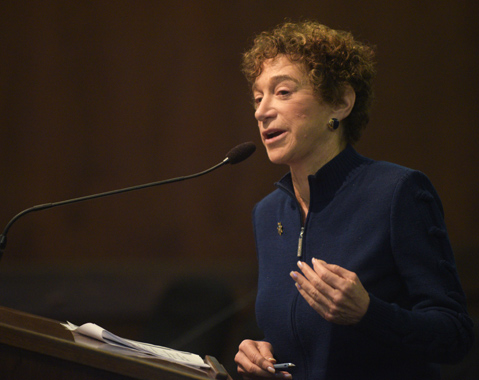Sheriff, DA Rain on Prop 47 Parade
Caution Supervisors over Supposed Benefits of New Sentencing Law

Sheriff Bill Brown reiterated one message on Tuesday: “Don’t get too excited.”
Four months after California voters overwhelming backed Proposition 47 — the state law that has demoted many theft and drug crimes from felonies to misdemeanors — advocates of the initiative are cheering projections of reduced jail populations and diminished workloads for county probation departments. But in the interim, district attorneys and public defenders across the state — including in Santa Barbara County — are being stretched further than they were before.
Under Prop. 47, crimes such as shoplifting, grand theft, and drug use are now offenses punishable not by prison time but by either up to a year in jail or a combination of treatment and/or probation. The law is expected to reduce jail overcrowding brought about by realignment, which began in 2011 and shifted responsibility for some prison inmates from the state to individual counties.
Supporters say inmates will now be able to leave congested jails sooner and fewer overall will enter. But skeptics of the law — including Brown and District Attorney Joyce Dudley — counter that without the “stick” of prison time, many criminals will reoffend, often choosing jail time over treatment options.
In asking the supervisors to lower their expectations, Brown lamented what he said were the “unintended consequences” of describing his department’s post-47 figures. The numbers are too preliminary, he worried, to paint the full picture. Drug arrests have dropped and drug citations have jumped, while drug-related bookings at the County Jail have plunged 50 percent, bringing the average inmate population to levels not seen since before realignment, otherwise known as AB 109.
That law went into effect in late 2011, when the Santa Barbara County Jail’s average population was 899. The next year, it jumped to 981. In 2013, it jumped to 1,002. Last year, it dropped to an average of 967. Further reductions came in November and December after Prop. 47 passed, reaching a low of 798 in January. But the figure jumped back to 854 in February, Brown said, explaining the figures will continue to fluctuate.
When some supervisors brought up cost savings at the jail, Brown again cautioned the board not to be “too optimistic.” Brown’s department currently faces a $2.2 million overtime-related budget deficit and will need $18 million a year to operate the North County Jail, slated to open in 2018. A key component of Prop. 47 is a fund — not up and running until 2016 — that will use the money saved under the law to dole out $150 million-$200 million worth of grants to counties for treatment programs and other preventative measures.
For American Civil Liberties Union attorney Jessica Farris, the effects of Prop. 47 — along with other state laws expected to lower jail populations — call into question the supposedly pressing need for a second Santa Barbara jail. At a forum the organization is holding here later this month, Farris and others will advise waiting on the new lockdown until all the recent legal changes congeal. Sheriff’s Office spokesperson Kelly Hoover said that $120 million in state funding the department received for the 572-bed North County Jail — which will include a recidivism-reducing wing — “remains secure.”
Dudley said to the board that there is “no sense” of how many cases will be litigated again, but her staff is dedicating considerable time to research. Since Election Day, she said, 300 cases have been resentenced in Santa Barbara County, and 200 more petitions are under review. Public Defender Ray Montes de Oca said his office has reopened 927 files.
New probation chief Guadalupe Rabago noted that the Santa Maria Juvenile Hall — which has a 120-bed capacity but usually hovers around 60 detainees — has seen an increase in misdemeanor bookings (from 34 to 39 percent), a decrease in felony bookings (from 18 to 13 percent), and has released one inmate under Prop. 47. Two Los Prietos Boys Camp inmates have been released, and the camp will soon reduce its capacity from 62 to 40, Rabago said.
On the side of his office that oversees adult offenders, there has been a decrease from 332 new cases per month to 275, and through January, 47 cases have been reduced under the new law.



